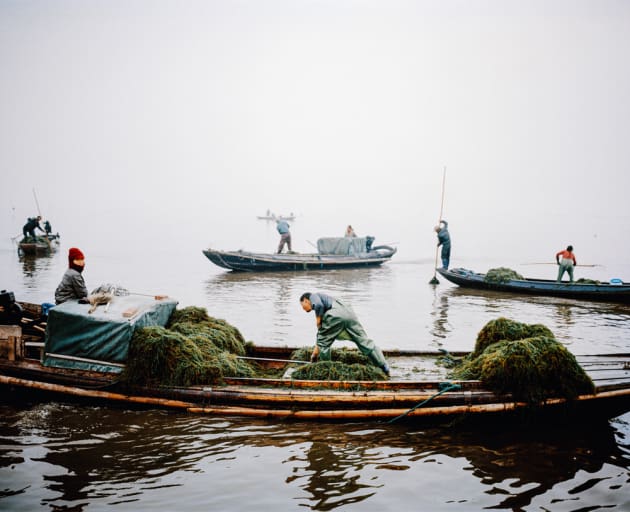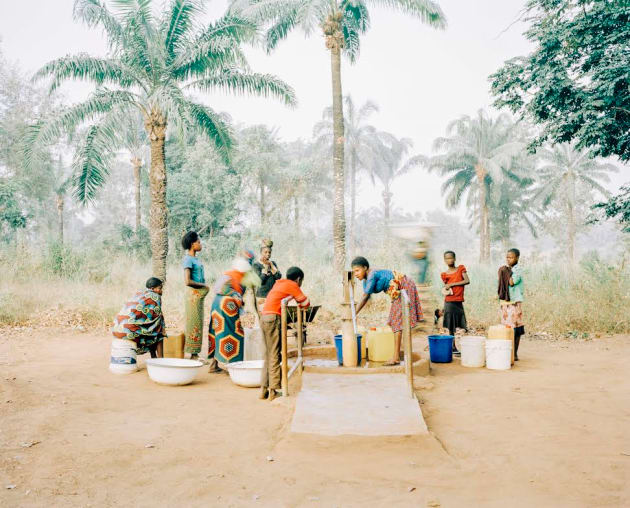Interview: Mustafah Abdulaziz's 'Water Stories' comes to Sydney
Water is essential to all life on Earth, and without it we’d be doomed - simple.
International photographer Mustafah Abdulaziz has spent over six years photographing water, travelling the world shooting thought provoking images focussed on the abundance or scarcity of it in contemporary societies. He has now brought the resulting exhibition, Water Stories, to Australia.
Abdulaziz spoke to us about Water Stories and his inspiration to highlight this most essential of elements and its role in our lives.

1. With Water Stories you're addressing the paucity of water amongst developing nations. When did you decide to tackle such a strong concept? What inspired Water Stories?
Water Stories is the logical culmination of two thought processes in 2014. At that time, I’d been working on the core project Water, which began in 2012 and will complete in 2027. First, I realized the work needed to focus on some really core issues of access to water, scarcity and related challenges. Second, I needed to make the work available to viewers at scale and as I created it. I needed to make it relevant now, even as I construct the larger work.

2. Your project's images are quite powerful - when did you realize the power that images have? Was there a specific project or photographer?
I’ve frequently described my early exposure to Richard Avedon and while this is a personal catalyst for my interest in the space between the camera and the subject and therefore, the viewer, this is far too simple of a narrative device for viewers to understand what brought me into photography and requires a bit of exposition.
My appreciation for the image—still and moving—began when I was very young and came from a fascination with escapism. The concept of photography wasn’t really present in my mind as a kid, but the elements that are critical in its creation are: imagination, curiosity, passion. These are all useful in the initial pursuit of photography and progressed to a desire to see what this form of expression could offer, what I could learn about myself and about the world at large.

3. Your project is continuing for several years - what keeps you going?
That question is of particular pertinence. I’ve been on a bit of a hiatus from photography the last ten months. This was a personal choice and came from personal reasons. The question of what keeps me going, or what is the deeper motivation that fulfils me and allows me to persist where others might not see value, used to be a sense of altruism or idealism that a work on water was of critical necessity and I possessed an excitement to meet this challenge. There’s elements of this feeling still, but it’s not the core reason.

4. There's a contrast in the works between plentiful bodies of water in developed nations and a lack of in undeveloped nations. What did you learn most about that contrast? How is that reflected in your work?
The level where the contrast of over supply and lack of supply of water is the most basic one of the project and rather easy to comprehend. It is, for this show, the framework in which other behaviors play out. Just as a theater sets the stage for the characters to play out stories that we, in the audience, seek to understand and see ourselves in. The more interesting things happen when the photographs don’t explain or contextualize, which is often necessary for the goal of having the most amount of people understand the issue of water but ultimately the least interesting for me, the photographer, to make.
We are all very much aware that the benefits of our developed societies afford us some privileges when it comes to resources. I doubt I can illuminate this reality to a viewer anymore so than the hundreds of articles, news reports, movies and art that has already contributed to it. My work is not about this contrast.

My work concerns people and their behavior at a large scale, the systems that are enacted to control and the impacts individuals and these systems have on the natural world and it’s impact in return. This is looked at through a diverse spectrum of experience and conditions, where the deeper realities of our choices and their impact on our world are reflected upon. The work might be best summarized, in many regards but not all, as a modern reflector. This is a device I use to bring things that are very far away and very abstract back upon the viewer.
This is why I am unconcerned by what I find to be the cliche and societal desire to place the burden of focus on the creator of the work, as though the documentation of a topic somehow places me above all others in authority, as though by default I become the preeminent expert on a vastly complex topic. This is a fundamental misunderstanding of the conditions at work. This exhibit has been brought across a huge ocean and constructed in a beautiful space in a great city. I think everything the viewer needs to know is in the work itself.
We live in a time when we can search for most answers, or engage with others to find out their views, and the motivation for that is by far the most critical aspect to me. People have within themselves the full ability and agency to go to the show and discern the many layers I’ve sought to bring to this work. The contrast between haves and have nots should be clear. The deeper ideas are for the viewer to see for themselves.
Water Stories has been brought to Australia for the first time by the HSBC Water Programme, in partnership with WWF, Earthwatch and WaterAid.
You can catch Water Stories at the Royal Botanic Gardens from the 15th of August to the 5th of September. To see more of Mustafah’s images, you can find his website here.


